Are you standing at the crossroads, debating between Forex vs Options trading? You’re not alone. Many aspiring traders grapple with this very decision, wondering which path will lead to greater financial success and personal satisfaction. The choice between Forex and Options can significantly impact your trading experience, profitability, and overall financial goals.
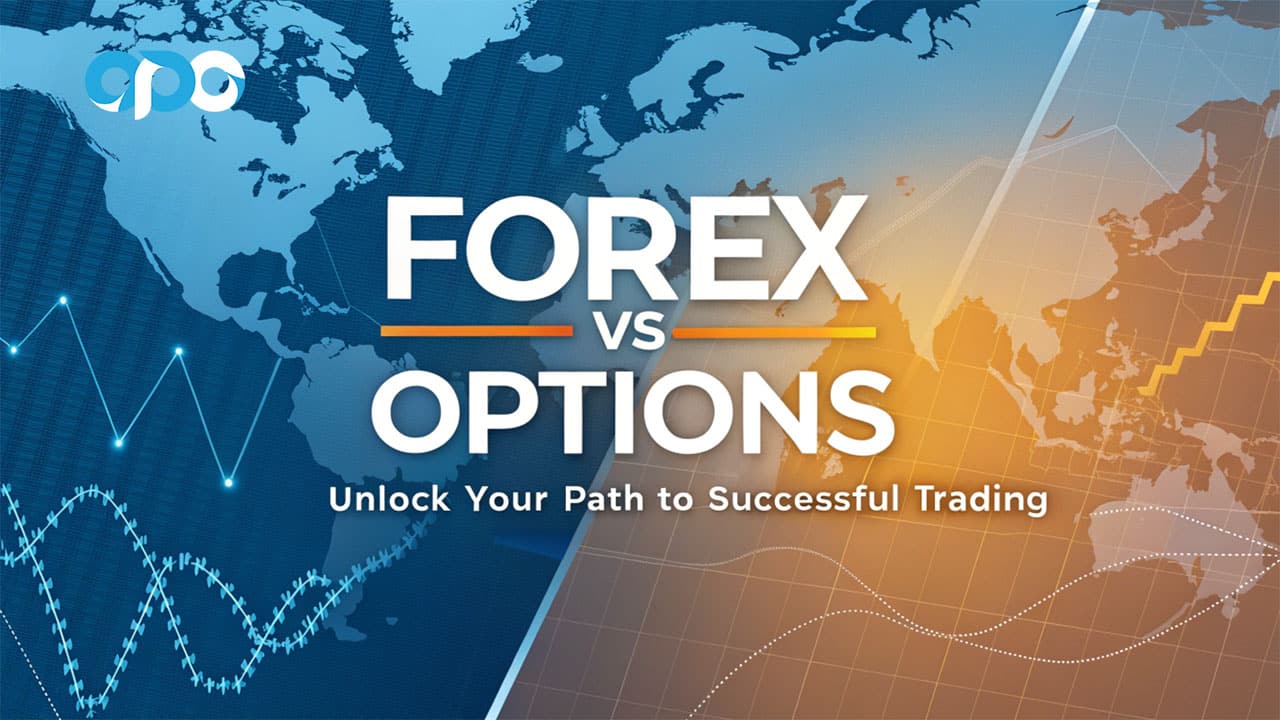
Choosing between Forex vs Options ultimately boils down to understanding each market’s mechanics, your personal risk tolerance, time commitment, and the type of profit opportunities you’re after. In this comprehensive guide, we’ll delve deep into both Forex vs Options Trading, exploring the nuances of Forex vs Options Investing and uncovering effective Forex vs Options Strategies. Whether you’re considering a regulated forex broker, such as a broker for forex trading, or weighing the benefits of options vs forex trading, this article is your roadmap to making an informed decision.
To kickstart your trading journey, it’s essential to partner with a reliable entity. A regulated forex broker not only ensures your investments are secure but also provides the necessary tools and support to navigate the complexities of Forex and Options markets. As we explore Forex vs Options, you’ll gain valuable insights, answer frequently asked questions, and discover strategies that align with your trading style and financial objectives.
Get ready to unravel the intricacies of these dynamic markets and uncover which one aligns best with your trading aspirations.
Understanding Forex Trading
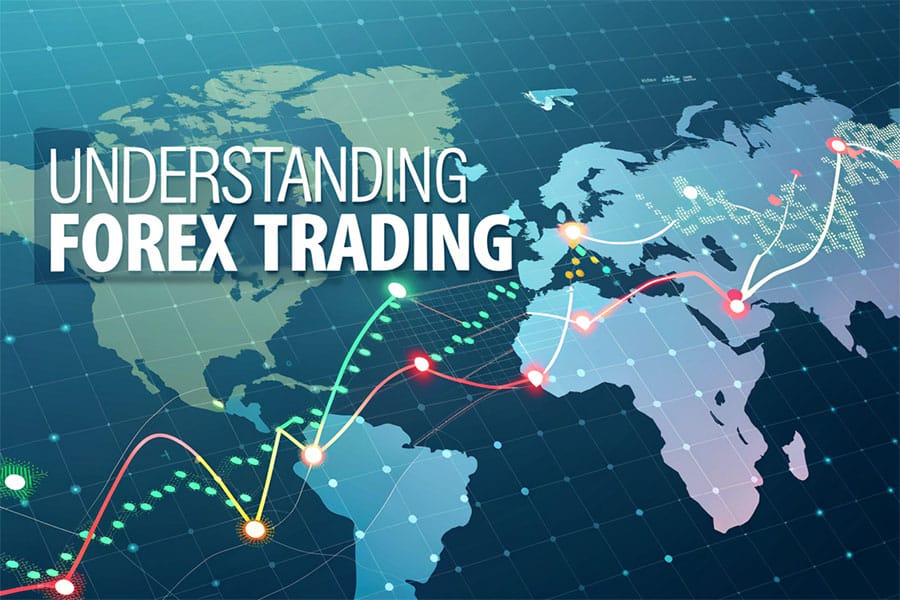
When discussing trading, Forex—short for Foreign Exchange—often takes center stage as the largest and most liquid financial market globally. But what exactly does Forex trading entail?
Forex trading is the beating heart of global finance, enabling traders to tap into worldwide currency movements at virtually any time of day.
Read More: Forex vs Stock
Overview of the Forex Market
The Forex market operates on a colossal scale, with an average daily trading volume exceeding $6 trillion. This immense liquidity is driven by a diverse array of participants, including major banks, multinational corporations, institutional investors, hedge funds, and individual retail traders. Unlike stock markets that trade on centralized exchanges, Forex is decentralized, operating over-the-counter (OTC) through electronic networks and platforms provided by online forex brokers.
The 24-hour nature of the Forex market allows trading to occur seamlessly across different time zones, from the bustling trading floors of Tokyo and London to the dynamic markets of New York. This continuous operation offers unparalleled flexibility, enabling traders to engage in transactions at any hour that suits their schedule.
How Forex Trading Works
At its core, Forex trading involves the exchange of one currency for another. These transactions are conducted in currency pairs, such as EUR/USD (Euro vs. U.S. Dollar) or GBP/JPY (British Pound vs. Japanese Yen). When you trade Forex, you’re simultaneously buying one currency while selling another, speculating on the relative movement between the two.
For instance, if you anticipate that the Euro will strengthen against the U.S. Dollar, you would buy the EUR/USD pair. If your prediction materializes and the Euro appreciates, you can sell the pair at a higher price, securing a profit. Successful Forex trading hinges on a deep understanding of economic indicators, interest rate policies, geopolitical events, and market sentiment, all of which influence currency valuations.
Key Features of Forex Trading
Forex trading offers several distinctive features that attract both novice and seasoned traders:
- High Liquidity: With trillions traded daily, Forex markets offer exceptional liquidity, ensuring that trades can be executed swiftly with minimal slippage.
- Flexible Trading Hours: Operating 24 hours a day, five days a week, Forex accommodates traders from all time zones and schedules.
- Leverage Opportunities: Brokers often provide leverage ratios such as 1:50 or 1:100, allowing traders to control large positions with relatively small capital. However, it’s crucial to manage leverage prudently to mitigate potential losses.
- Diverse Currency Pairs: From major pairs like EUR/USD and GBP/USD to minor and exotic pairs, traders have a wide array of options to suit their trading strategies and risk appetites.
Understanding Options Trading
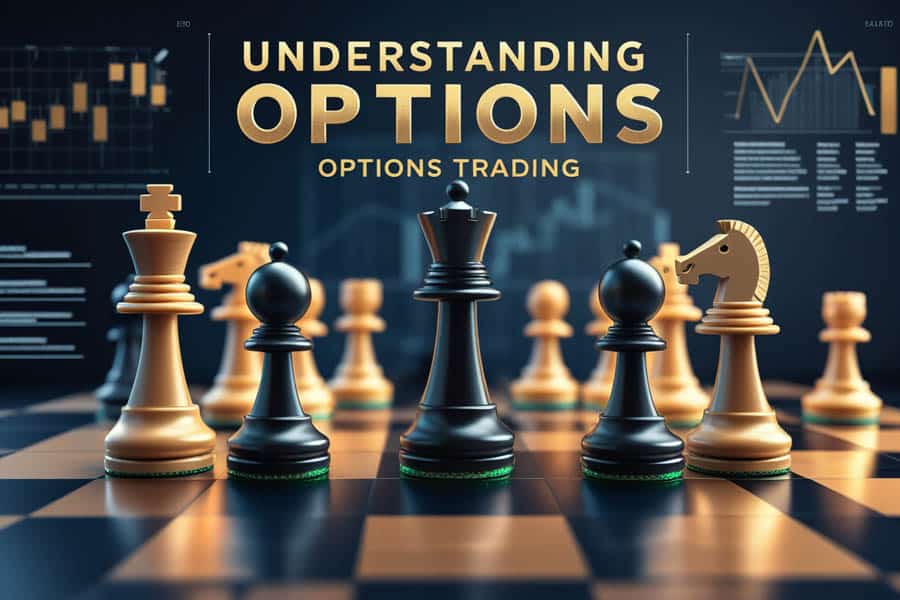
While Forex focuses on currency pairs, Options Trading introduces a different dimension to the financial markets by offering strategic flexibility and defined risk parameters.
Options trading grants traders unparalleled strategic flexibility and defined risk parameters, making it possible to profit in rising, falling, or even sideways markets.
Overview of Options Markets
Options are financial derivatives that grant the holder the right, but not the obligation, to buy or sell an underlying asset at a predetermined price within a specific timeframe. These underlying assets can range from stocks and commodities to indices and currencies. Options are traded on regulated exchanges, providing a structured environment with standardized contracts.
The rise of advanced trading platforms and increased financial literacy have fueled the growth of options markets. Traders and investors utilize options for various purposes, including speculation, hedging existing positions, and generating income through premium collection.
How Options Trading Works
There are two primary types of options: calls and puts. A call option gives the holder the right to buy the underlying asset at a specified strike price before the option expires. Conversely, a put option grants the holder the right to sell the underlying asset at the strike price within the same period.
For example, if you purchase a call option on a stock with a strike price of $50, and the stock’s market price rises to $60, you can exercise the option to buy at $50, then sell at the current market price, pocketing the difference as profit. If the stock price doesn’t exceed the strike price before expiration, the option expires worthless, and your loss is limited to the premium paid for the option.
Key Features of Options Trading
Options trading is renowned for its versatility and the myriad of strategies it supports:
- Strategic Flexibility: Options allow traders to implement strategies that can profit from various market conditions—whether the market is trending, ranging, or volatile.
- Defined Risk: When buying options, the maximum potential loss is limited to the premium paid, offering a clear risk framework.
- Leverage: Options provide inherent leverage, enabling traders to control larger positions with a smaller initial investment compared to buying the underlying asset outright.
- Time Sensitivity: Options come with expiration dates, introducing a time component that adds complexity but also strategic opportunities based on time decay and volatility.
Comparative Analysis: Forex vs Options
Choosing between Forex vs Options Trading requires a nuanced understanding of each market’s unique attributes. Below is a comprehensive comparison to help you navigate this decision.
By comparing the core aspects of Forex vs Options, you gain clarity on which market’s structure, risk profile, and profit potential resonate most with your trading style.
Forex vs Options: A Side-by-Side Comparison
| Factor | Forex | Options |
| Market Accessibility | Decentralized, global, trades 24/5 | Centralized exchanges, trades mostly during underlying hours |
| Trading Instruments | Currency pairs (e.g., EUR/USD) | Calls, puts on stocks, commodities, indices, currencies |
| Leverage & Margin | High leverage commonly available | Leverage built into option contracts (premium vs underlying) |
| Liquidity | Extremely high for major currency pairs | Varies by underlying asset; some options less liquid |
| Risk Management | Stop-loss orders, position sizing essential | Defined risk on premium paid; complex strategies for hedging |
| Profit Potential | Potential steady returns if disciplined | Potentially explosive gains with correct timing & direction |
| Time Sensitivity | Positions can be held indefinitely | Options expire, creating a “ticking clock” dynamic |
Market Accessibility and Trading Hours
In the realm of Forex vs Options, one of the most significant differences lies in their trading hours and accessibility.
Forex operates 24 hours a day, five days a week, allowing traders to engage in the market at any time that suits their schedule. This continuous operation is facilitated by overlapping trading sessions in major financial hubs like Tokyo, London, and New York. Whether you’re an early riser or a night owl, Forex provides the flexibility to trade whenever you choose.
Conversely, Options trading typically aligns with the trading hours of the underlying asset’s exchange. For example, stock options trade during standard equity market hours—9:30 AM to 4:00 PM EST. While some platforms offer extended hours trading, liquidity during these times can be lower, leading to wider bid-ask spreads and potentially less favorable execution prices.
If you value the ability to trade at any time, Forex might be more appealing. However, if you prefer the structured environment of set trading hours, Options could be a better fit.
Leverage and Margin Requirements
Leverage plays a pivotal role in both Forex and Options, but it manifests differently in each market.
In Forex trading, leverage is a fundamental aspect. Forex brokers often provide leverage ratios such as 1:50 or 1:100, enabling traders to control large positions with relatively small capital. For instance, with 1:100 leverage, a $1,000 deposit can control a $100,000 position. While leverage can amplify profits, it equally magnifies losses, making disciplined risk management crucial.
Options inherently offer leverage through their contract structure. Each options contract typically represents 100 shares of the underlying asset, allowing traders to control a substantial position with a fraction of the cost. The premium paid for an option provides exposure to the underlying asset’s price movement without the need to invest the full value of the asset. However, the leverage in Options is coupled with time sensitivity, as options have expiration dates that can erode their value over time.
Understanding how leverage works in both markets is essential to managing risk and maximizing potential returns.
Liquidity and Market Participants
Liquidity is a critical factor influencing trading efficiency and execution quality in both Forex and Options.
The Forex market boasts unparalleled liquidity, especially in major currency pairs like EUR/USD, GBP/USD, and USD/JPY. This high liquidity ensures tight spreads (the difference between the bid and ask price) and minimal slippage, facilitating smooth and cost-effective trade executions. The vast number of participants, including banks, financial institutions, corporations, and retail traders, contributes to this liquidity.
In contrast, Options liquidity varies significantly depending on the underlying asset. Options on highly traded stocks or indices, such as Apple (AAPL) or the S&P 500 (SPX), tend to have robust liquidity with tight bid-ask spreads. However, options on less popular or niche assets may suffer from lower liquidity, resulting in wider spreads and potentially higher trading costs. Traders must assess the liquidity of specific options contracts to ensure efficient trade execution and optimal pricing.
High liquidity is advantageous as it allows for easier entry and exit from positions, reducing the cost and complexity of trading.
Risk Factors and Management
Both Forex and Options trading come with their own set of risks, necessitating effective risk management strategies.
In Forex, the primary risks stem from currency price volatility influenced by economic indicators, interest rate changes, geopolitical events, and market sentiment. High leverage exacerbates these risks, as small price movements can lead to significant gains or losses. Implementing stop-loss orders, proper position sizing, and maintaining a disciplined trading approach are essential to mitigating Forex risks.
Options trading introduces additional complexities. While buying options limits potential losses to the premium paid, selling options can expose traders to substantial risks, especially with uncovered or naked positions. Furthermore, options are subject to time decay (theta), meaning their value decreases as the expiration date approaches. Managing options positions requires a solid understanding of options Greeks (delta, gamma, theta, vega) and employing strategies that align with market conditions and risk tolerance.
Effective risk management is paramount in both markets to protect your capital and sustain long-term trading success.
Potential Returns and Profitability
The potential for returns varies between Forex and Options, influenced by market dynamics and trading strategies.
Forex trading offers the opportunity for steady, incremental gains driven by currency fluctuations. Traders can benefit from both rising and falling markets by taking long or short positions on currency pairs. With disciplined trading and effective use of leverage, consistent profitability is achievable over time.
Options, on the other hand, present the possibility of substantial returns in a shorter timeframe. Strategic options trades, such as buying calls or puts, can yield significant profits if the underlying asset moves favorably. Additionally, advanced options strategies like spreads, straddles, and iron condors can enhance return potential while managing risk. However, the time-sensitive nature of options means that precise timing is critical, and misjudging market movements can lead to total loss of the premium.
Both markets offer lucrative opportunities, but the path to profitability requires a tailored approach aligned with your trading style and risk appetite.
Choosing Between Forex and Options
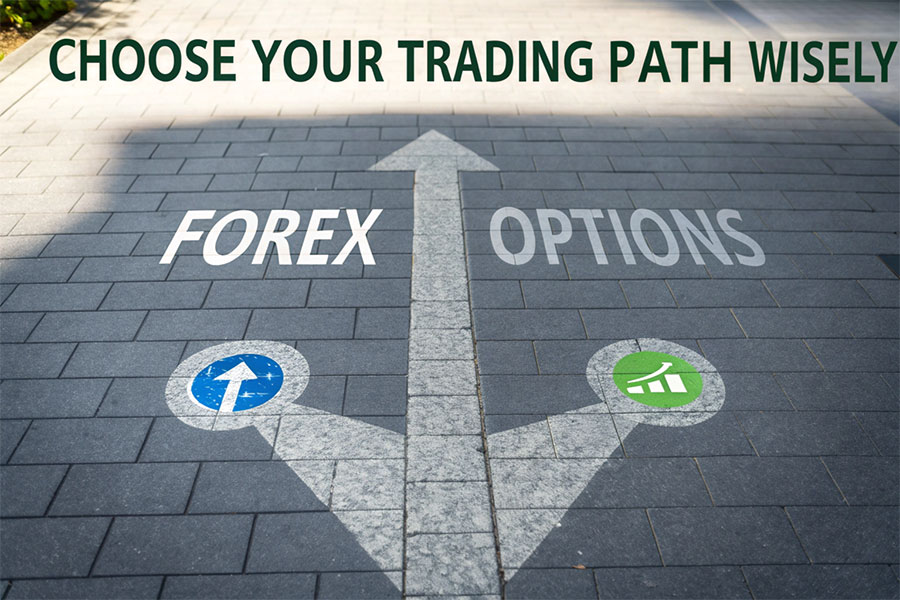
Deciding between Forex and Options trading involves introspection and a clear understanding of your financial objectives, risk tolerance, and trading preferences.
Your ideal choice between Forex vs Options aligns not just with your profit targets, but with your personality, schedule, and comfort in handling complexity and uncertainty.
Factors to Consider
When evaluating Forex vs Options Investing, consider the following factors:
- Time Commitment: Forex’s 24/5 trading schedule suits traders with flexible or irregular schedules, while Options trading is confined to specific market hours, requiring more structured time commitments.
- Risk Appetite: Forex trading, with its high leverage, demands a higher risk tolerance and disciplined risk management. Options offer strategies with defined risk, appealing to those who prefer controlled exposure.
- Complexity: Forex trading is relatively straightforward, focusing on currency pair movements. Options trading introduces additional layers of complexity with various strategies and the need to understand options Greeks.
- Learning Curve: Both markets require education and practice. Forex emphasizes macroeconomic factors, while Options necessitate a deeper understanding of volatility, time decay, and strategic positioning.
Suitability for Different Types of Traders
- Beginner Traders: Forex may be more accessible for novices due to its simpler structure and direct approach to trading currency pairs. However, with the right education, Options can also be beginner-friendly through straightforward strategies like buying calls and puts.
- Technical Analysts: Both markets are well-suited for technical analysis. Forex often relies on chart patterns and indicators, while Options traders may use technical signals to time their entries and exits.
- Long-Term Investors: Options can be used for hedging long-term equity positions or generating income through strategies like covered calls. Forex provides diversification by offering exposure to global currencies, which can complement a long-term investment portfolio.
Examples of Trading Scenarios
Forex Scenario: Suppose you believe the U.S. Dollar will strengthen against the Euro due to upcoming interest rate hikes by the Federal Reserve. You decide to buy the USD/EUR pair. As the Fed’s actions positively influence the Dollar, the pair’s value increases, allowing you to sell at a higher price and realize a profit.
Options Scenario: Imagine you anticipate that a particular stock will experience significant volatility after an earnings report but are uncertain about the direction. You purchase both a call and a put option (a straddle). If the stock moves sharply in either direction, the profitable option can offset the loss on the other, potentially yielding substantial gains.
These scenarios illustrate how each market caters to different trading strategies and market outlooks, highlighting the importance of aligning your choice with your trading objectives.
Pro Tips for Advanced Traders
For those who have mastered the basics and are ready to elevate their Forex vs Options Strategies, advanced techniques and disciplined execution can significantly enhance profitability.
Becoming an advanced trader means continuously learning, adapting, and embracing sophistication in both analysis and execution.
Advanced Forex Strategies
- Carry Trade: Capitalize on interest rate differentials between currencies. Borrow in a currency with a low-interest rate and invest in one with a higher rate, profiting from the interest rate spread.
- Algorithmic Trading: Utilize automated systems and algorithms to execute trades based on predefined criteria, enhancing speed and efficiency.
- Hedging: Protect your positions against adverse market movements by taking offsetting positions or using options alongside Forex trades.
Advanced Options Strategies
- Iron Condor: A strategy that involves selling both a call spread and a put spread, benefiting from low volatility and range-bound markets.
- Butterfly Spread: Combines buying and selling options at different strike prices to profit from minimal price movement while limiting risk.
- Calendar Spread: Involves buying and selling options with different expiration dates, capitalizing on time decay and volatility changes.
Combining Forex and Options
Integrating both markets can offer diversified opportunities and enhanced risk management. For example, holding a Forex position to express a long-term currency view while using Options to hedge against short-term volatility can create a balanced trading portfolio.
Diversification across both markets can mitigate risks and capitalize on different market dynamics, fostering a more resilient trading strategy.
Continuous Learning and Adaptation
Markets are ever-evolving, influenced by global events, technological advancements, and shifting economic landscapes. Staying informed through continuous education, attending webinars, and engaging with trading communities can keep your strategies sharp and adaptable.
Embrace a growth mindset, continuously refine your strategies, and stay ahead of market trends to maintain a competitive edge.
Opofinance Services
Opofinance empowers traders to access global markets with trust, innovation, and the backing of a leading regulated environment.
Choosing the right regulated forex broker is crucial for a successful trading experience. Opofinance stands out as a premier choice, offering a suite of services tailored to both Forex and Options traders.
- ASIC Regulated & Trusted: Partner with a broker governed by the Australian Securities and Investments Commission (ASIC), ensuring compliance with stringent regulatory standards for a secure trading environment.
- Social Trading Service: Leverage the expertise of top-performing traders through Opofinance’s social trading platform. Copy their strategies, learn from their insights, and replicate successful trades effortlessly.
- MT5 Brokers List Featured: Recognized on the MT5 brokers list, Opofinance provides access to the advanced MetaTrader 5 platform, renowned for its powerful trading tools and seamless execution.
- Safe & Convenient Deposits and Withdrawals: Experience hassle-free fund management with a variety of secure payment methods, ensuring your deposits and withdrawals are processed swiftly and safely.
- Exclusive Market Insights & Education: Gain access to comprehensive market analysis, educational resources, and expert webinars designed to enhance your trading knowledge and skills.

Take Action Now!
Visit Opofinance to start trading confidently, benefit from their robust platform, and unlock the world of Forex and beyond. Don’t miss your chance to partner with a trustworthy broker that supports your growth and profitability.
Conclusion
The true power in choosing between Forex vs Options lies in understanding your needs, mastering each market’s mechanics, and embracing strategies that align with your comfort zone and financial dreams.
When comparing Forex vs Options, there is no one-size-fits-all answer. Each market presents unique advantages and challenges that cater to different trading styles and financial goals. Forex’s continuous trading hours, high liquidity, and direct approach appeal to those who enjoy macroeconomic analysis and round-the-clock opportunities. In contrast, Options offer strategic flexibility, defined risk, and the potential for significant returns, attracting traders who relish complex strategies and precise market timing.
The key to success lies in aligning your trading choice with your personal preferences, risk tolerance, and financial objectives. Whether you choose to focus solely on Forex, delve into the strategic world of Options, or blend both to diversify your trading portfolio, preparation and continuous learning are paramount. Equip yourself with the right tools, partner with a reputable broker like Opofinance, and commit to disciplined trading practices to navigate the dynamic landscapes of Forex and Options with confidence.
Key Takeaways
- Understanding the Differences: Forex offers continuous trading, high liquidity, and leverage, while Options provide strategic flexibility, defined risks, and diverse strategies.
- Profit Potential: Forex thrives on steady currency trends, offering consistent returns with disciplined trading. Options can yield substantial gains with accurate market predictions and timing.
- Risk Management: Effective risk management is crucial in both markets. Forex requires disciplined use of leverage and stop-loss orders, whereas Options necessitate understanding time decay and volatility.
- Strategy & Suitability: Forex suits traders who prefer flexibility and macroeconomic analysis, while Options cater to those who enjoy structured, defined-risk strategies.
- Blend for Success: Combining Forex and Options trading can enhance portfolio diversification, allowing traders to leverage the strengths of both markets for improved resilience and profitability.
Can I generate passive income more easily through Forex or Options?
Options often stand out for income-generating strategies like covered calls, which offer regular premium payments. While Forex can produce steady returns, it typically demands more active monitoring compared to the more structured income opportunities available in Options.
Is it feasible to combine Forex trading with Options strategies for diversification?
Absolutely. Some traders pair Forex positions with Options on related currency ETFs or equities to hedge risks or exploit short-term opportunities. This combination can enhance diversification and provide a balanced approach to risk management.
How does market volatility affect the choice between Forex and Options trading?
Volatility impacts both markets differently. In Forex, volatility can create opportunities for breakout trades or trend-following strategies. In Options, volatility influences option premiums and the probability of profitable expirations. Traders who thrive in volatile environments might lean towards Options for their diverse strategies to capitalize on volatility.







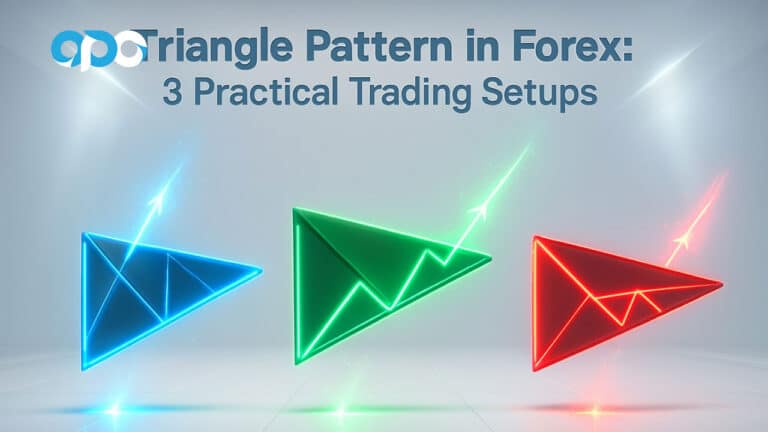
One Response
Thank you for sharing indeed great looking !